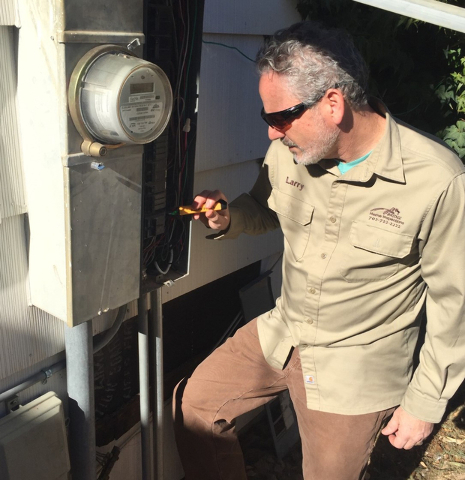Inspection is key when buying home that needs work
The key to buying a home in as-is condition is simple: Know what you’re getting into. As-is condition simply means that the seller does not guarantee the condition of the home; it doesn’t mean the buyer can’t find it out before dumping money into a pit.
Listing a home as-is can be beneficial to a seller who doesn’t have the money for repairs, but it comes at a cost.
“I encourage my sellers to make minor to major repairs — they typically end up with more in their pocket by making repairs before putting the home on the market,” said Faith Harmer, a Realtor with Urban Nest. “If you have a good Realtor, she should have a list of contractors that she uses on a regular basis.”
And, if you’re buying, “that means that you should get a better deal to cover what you may need to fix,” she said.
There are several protections that extend to all homebuyers, provided the contract is written properly and the standard review periods are included.
Sellers are required by state law to provide a real property disclosure form that lists any known issues with a home. But the form does not require any inspections of the items listed or provide a warranty of the items. It’s simply to mark if the seller knows of an issue.
“This form can be skimped or ‘quickie-ed’ and in many cases is not informative at all — such as when a house flipper fills it out with no historical knowledge of the home,” warned Larry Perna, owner of Bridge Home Inspections.
The form requests a simple “yes” or “no” regarding issues with every part of the house, from the foundation to the bathtub to the electrical system. It also asks if there has ever been any mold, any drainage problems on the land, problems with the pool and any homeowners association covenants for the property. The four-page form also requires a seller to tell a buyer of any new or worsening defects throughout the purchase process.
“If a buyer discovers that the seller purposely hid something after closing, they can sue the seller for three times the amount of the repair,” Harmer said.
But keep in mind, that only applies to hidden defects, not defects that the seller didn’t know about.
“Disclosure forms are only as valuable as they are accurately written,” Perna said. “Unfortunately, not enough emphasis gets placed on them which lowers their value.”
That’s where the contract comes into play. It is procedure for a contract to have an inspection contingency, which allows a buyer a set number of days (typically seven to 10) to perform an inspection of the property.
“Probably the most important part of the due diligence is the home inspection,” Perna said. “This process collects real-time condition information as well as reports any visible evidence of past issues or defects such as visible smoke or water damage in the attic or stained ceilings that would indicate a leak had occurred.”
He said roughly three-quarters of homebuyers get an inspection.
“My company does between 100 to 150 per month, and we have never had someone regret it.”
A certified home inspection ensures that the inspector meets the criteria — education, examination, fingerprinting and background check — set by the Nevada Real Estate Division and that the inspector provides a physical examination of the mechanical, electrical or plumbing systems of the home.
“I would recommend using an inspection company that is reputable, experienced and accountable to the community,” Perna suggested. “Accreditation with the Southern Nevada BBB (Better Business Bureau) and membership in the local association, SNAPPI (the Southern Nevada Association of Professional Property Inspectors) is always a positive.”
A thorough, written inspection report should document the condition of the home and any repairs that are necessary.
But with a home on sale in an as-is condition, the seller has declared a refusal to repair the home.
The buyer has a few choices if an issue arises during inspection.
• Walk away: Because of the contingency clause in the contract, the buyer can cite the inspection report as a reason to withdraw. Typically, the buyer is refunded his earnest money deposit in this instance.
• Request repair: It’s unlikely the seller will comply as he or she has chosen to list the property in as-is condition, but the request could be filed to see if the seller will chose to fix it. “More commonly I see the buyers and sellers work out a repair, replacement or a monetary compensation for significant items,” Perna said. “If repaired or replaced, we usually return for a re-inspection to verify it was done.”
• Request an allowance: Ask the seller to deduct the cost of the repair from the purchase price of the home. Sellers usually have factored this into the list price, and they might be unwilling to negotiate.
• Buy a home warranty: If something looks worn but not broken, a home warranty might be a solid option. Think of it as medical insurance for your house. The owner of the warranty typically has a low-cost payment, about $100, for service to fix anything that breaks, and if the item can’t be repaired, it is replaced.
Fannie Mae and HUD managers will typically replace “hazard and safety” items such as furnace issues, seismic straps on a water heater or broken glass, Perna said. But, “they are less likely to repair missing cabinet doors or bad flooring.”
And, in the end, know the sellers. If they are desperate to sell, they might repair the issue or drop the price simply to complete the contract. But, if they know other buyers are in the wings, they could play hardball.
“If they are getting a good price and can fix the property to be what they want,” Harmer said, “then it may be worth it.”


















